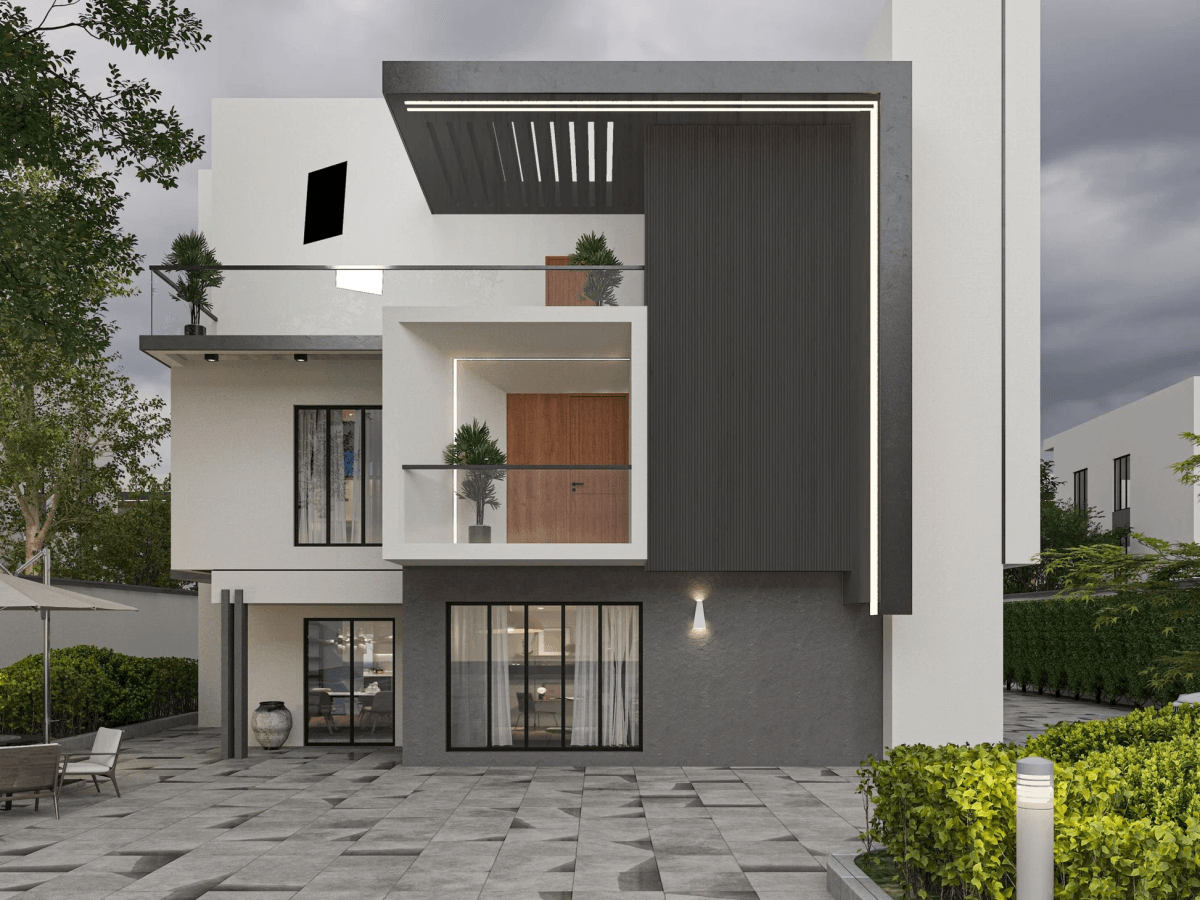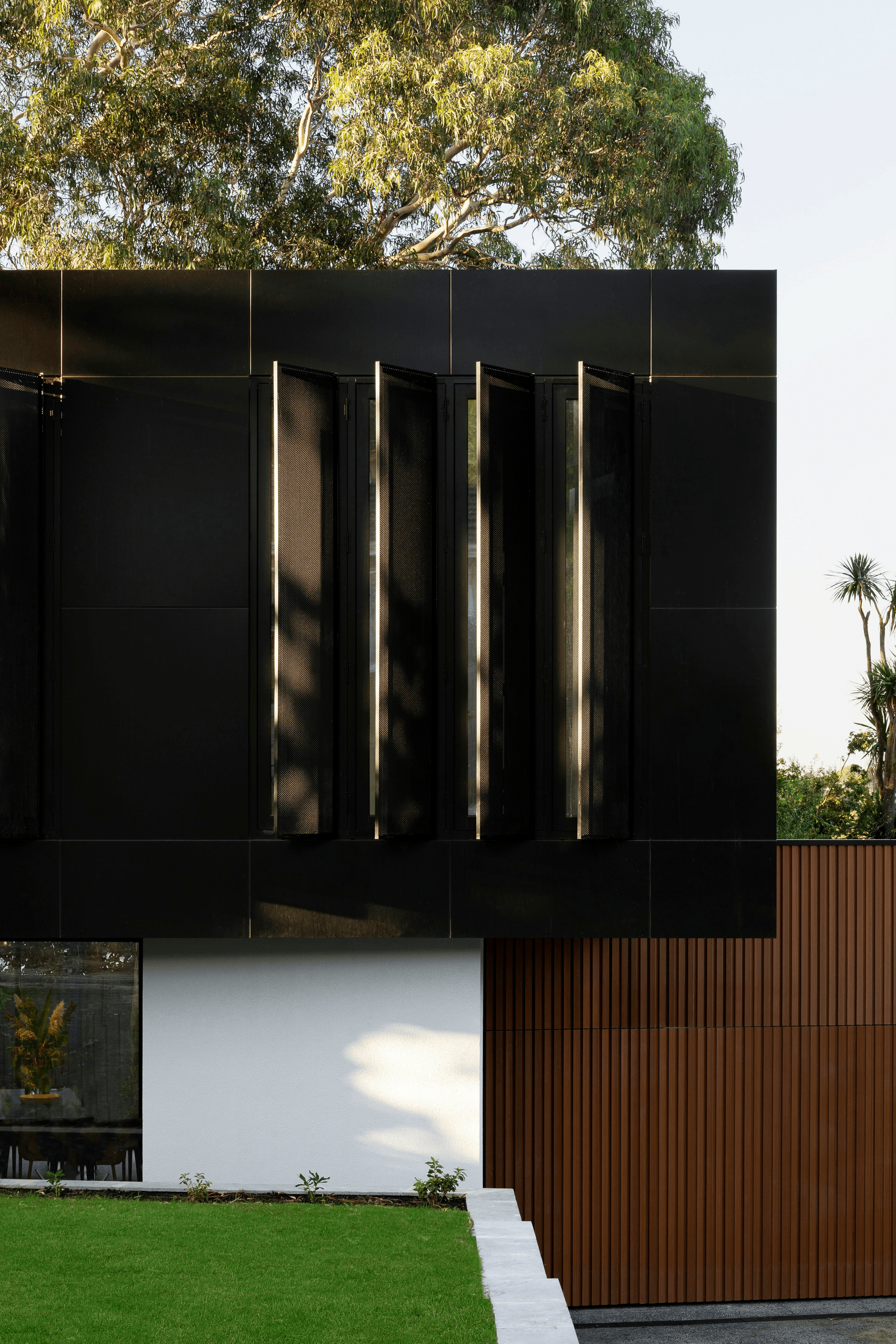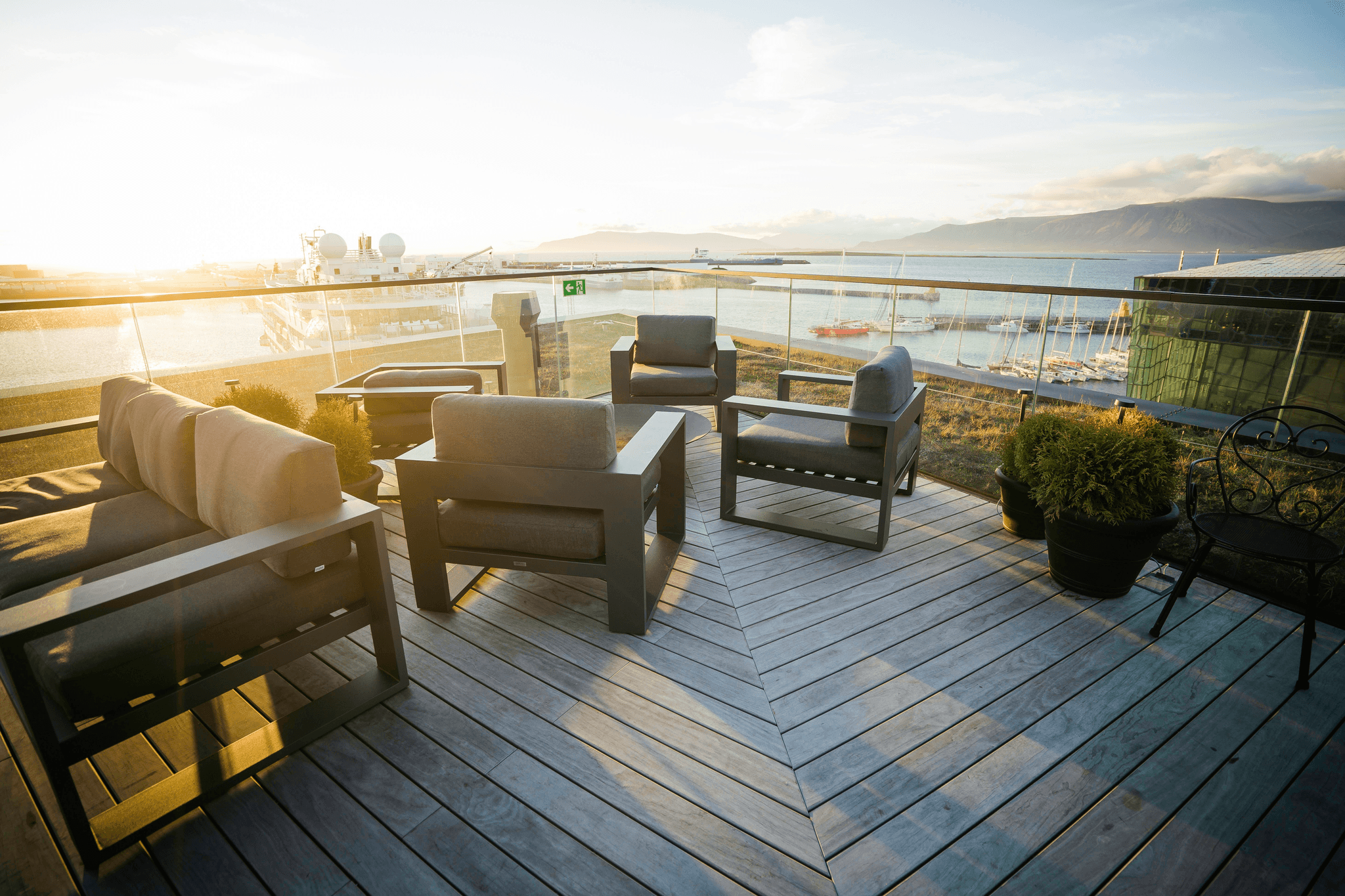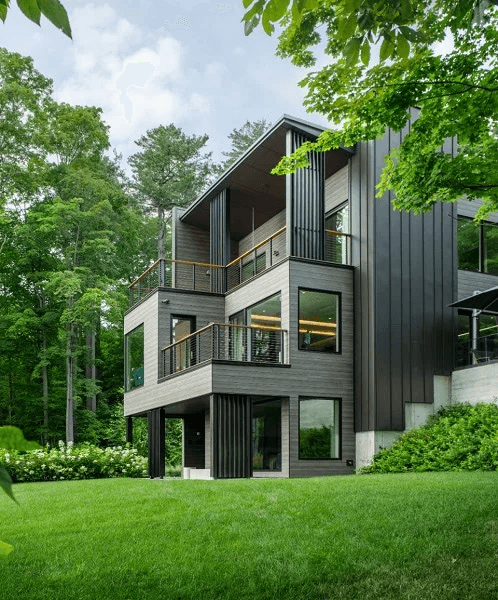Introduction
This innovative approach not only boosts aesthetic appeal but also offers an array of practical benefits that traditional materials simply can't match. With the rise of composite wood materials, homeowners are discovering a sustainable solution that combines beauty with durability.
Discover the Benefits of Composite Cladding
Composite cladding is revolutionizing the way we think about exterior design, providing a perfect blend of style and substance. One major benefit is its remarkable durability; composite wood can withstand harsh weather conditions without warping or fading, making it a wise choice for any climate. Plus, many options are eco-friendly, using recycled materials to create stunning finishes while minimizing environmental impact.
Why Choose Composite Wood Materials?
Choosing composite wood materials means investing in longevity and low maintenance requirements—who wouldn’t want that? Unlike traditional decking options that require regular staining or sealing, maintenance free decking allows you to enjoy your outdoor space without constant upkeep. Additionally, with faux wood decking available in various styles and colors, you can achieve the natural look of wood without sacrificing performance.
Elevate Your Outdoor Aesthetic
Elevating your outdoor aesthetic has never been easier with the versatility offered by composite decking solutions. Whether you’re looking to create a cozy deck for entertaining or a sleek facade for your home’s exterior, there’s a composite option tailored just for you. As homeowners increasingly turn to reviews on composite decking before making decisions, it's clear that this modern alternative is becoming the go-to choice for those seeking both elegance and efficiency.
What is Composite Cladding?

Composite cladding is a modern building material that combines the best of both worlds: the natural beauty of wood and the durability of synthetic materials. This innovative solution is crafted from a mixture of wood fibers and recycled plastics, resulting in a product that mimics traditional wood while offering enhanced performance. As homeowners increasingly seek sustainable options, composite cladding design has gained popularity for its aesthetic appeal and practical benefits.
Definition and Composition
At its core, composite cladding refers to exterior siding made from a blend of wood particles and polymer resins. This unique composition not only provides strength but also allows for a variety of finishes that can replicate the look of real wood without the drawbacks associated with it. By utilizing composite wood materials, builders can create stunning facades that resist weathering, rot, and insect damage.
Types of Composite Wood
From high-density polyethylene (HDPE) composites to those made with recycled PVC decking materials, each type offers distinct advantages in terms of durability and aesthetics. Faux wood decking options are particularly popular for their realistic appearance combined with low maintenance requirements—perfect for busy homeowners looking to elevate their outdoor spaces without constant upkeep.
Common Uses in Design
Composite cladding is incredibly versatile and can be utilized in various architectural applications beyond just siding; think deck railings, fences, or even garden structures! Its resistance to fading makes it an excellent choice for outdoor settings where exposure to sunlight is inevitable. With its ability to enhance any design scheme while providing maintenance-free decking solutions, it's no wonder composite cladding has become a favorite among architects and designers alike.
Key Benefits of Composite Cladding Design

By opting for composite wood materials, homeowners can enjoy a blend of beauty and practicality that traditional materials often lack. Let’s dive into some key advantages that make composite decking an appealing choice.
Durability and Longevity
One of the most compelling reasons to choose composite wood is its remarkable durability and longevity. Unlike natural wood, which can warp, splinter, or decay over time, composite decking is engineered to withstand the elements without compromising its aesthetic appeal. This resilience means less frequent replacements and repairs, making it an excellent investment for those who value long-lasting outdoor solutions.
Eco-Friendly Options
In today’s environmentally conscious world, many homeowners are seeking eco-friendly options in their building materials. Composite wood materials are often made from recycled plastics and reclaimed wood fibers, significantly reducing waste while providing a sustainable alternative to traditional lumber. By choosing products like PVC decking or faux wood decking, you’re not only beautifying your space but also contributing positively to the environment.
Low Maintenance Requirements
One of the most attractive features of maintenance free decking is how little upkeep it requires compared to conventional materials. With composite cladding design, say goodbye to regular painting or staining; a simple wash with soap and water is usually enough to keep surfaces looking fresh and new. This low maintenance requirement frees up your time for more enjoyable activities rather than spending weekends on upkeep chores.
How Composite Decking Can Transform Spaces

With its ability to mimic the look of traditional wood while offering superior durability, faux wood decking can elevate any patio, deck, or garden area. Homeowners are increasingly turning to composite wood materials for their aesthetic appeal and long-lasting performance, making it a top choice in composite cladding design.
Visual Appeal of Faux Wood Decking
Faux wood decking offers an authentic appearance that can easily fool even the most discerning eye, combining beauty with practicality. The variety of colors and finishes available allows homeowners to achieve their desired look without the drawbacks of natural wood, such as splintering or fading. Many reviews on composite decking highlight how this type of material maintains its stunning visual appeal year after year, proving that you don’t have to sacrifice style for substance.
Integration with Landscaping
One of the standout features of composite decking is its seamless integration with various landscaping elements. Whether you’re designing a cozy outdoor lounge or connecting pathways through your garden, composite wood materials can complement plants and hardscapes beautifully. This versatility allows homeowners to create cohesive outdoor environments where maintenance free decking enhances not only functionality but also aesthetic harmony.
Versatility in Design Applications
The versatility of composite decking makes it suitable for a range of design applications beyond just traditional decks. From pool surrounds and outdoor kitchens to raised patios and garden borders, the possibilities are virtually endless when using these innovative materials. This adaptability has led many homeowners to explore unique designs that incorporate both functionality and style into their living spaces while enjoying the benefits associated with PVC decking.
Reviews on Composite Decking: Real User Insights

Many homeowners rave about the aesthetic appeal and durability of composite wood materials, noting how their outdoor spaces have transformed with faux wood decking options. The positive feedback often highlights not just the beauty but also the maintenance-free decking aspect, which is a game changer for busy families and individuals.
Customer Experiences with Composite Decking Inc
Customers of Composite Decking Inc frequently express satisfaction with both the product quality and customer service. Many reviews on composite decking mention how easy installation was compared to traditional materials, making it a popular choice among DIY enthusiasts. Users appreciate that composite wood materials not only look stunning but also stand up to the elements better than conventional wood, reducing worries about warping or fading over time.
Comparing PVC Decking to Traditional Materials
In discussions comparing PVC decking to traditional materials like treated lumber, users often point out significant advantages of going with composite options. For instance, while traditional wood may require frequent staining or sealing, faux wood decking provides a more hassle-free experience without compromising on style or performance. This trend towards maintenance-free decking is echoed in many reviews, where customers appreciate spending less time on upkeep and more time enjoying their outdoor spaces.
Factors Influencing Customer Satisfaction
Several factors play into customer satisfaction when it comes to composite cladding design and decks made from composite wood materials. Quality of materials is paramount; users report that higher-end products lead to longer-lasting results and fewer issues down the line. Additionally, aesthetics matter—homeowners want their outdoor areas to reflect personal style while being functional; thus, they often seek out brands that offer a variety of colors and textures in their composite decking lines.
Choosing the Right Composite Wood

Evaluating Material Options
Start by evaluating different types of composite wood materials on the market today. Some products are designed with PVC decking in mind, offering a maintenance-free decking experience that appeals to busy homeowners. Others might incorporate natural fibers for a more authentic look, like faux wood decking, which can beautifully mimic traditional timber without the upkeep.
Consider factors such as durability and resistance to fading when comparing options. High-quality composite cladding design often includes UV protection and weather-resistant features that enhance longevity. Reading reviews on composite decking can also provide insights into how these materials hold up over time in various climates.
Trends in Composite Cladding Design
The world of composite cladding design is continually evolving, with trends that reflect both style and sustainability. Earthy tones and textures are gaining popularity as homeowners seek ways to integrate their outdoor spaces with nature seamlessly. Additionally, innovative designs featuring mixed materials are emerging, allowing for unique combinations of composite wood with metal or glass accents.
Another trend is the shift toward eco-friendly options within composite decking products. Many manufacturers now offer sustainable solutions made from recycled materials that appeal to environmentally conscious consumers. Staying updated on these trends not only enhances your property’s aesthetic but also ensures you’re making choices that align with modern design sensibilities.
Budget Considerations for Homeowners
Budgeting for your project is essential when choosing between various types of composite wood products. While some may be tempted by lower-cost alternatives, investing in high-quality materials like premium PVC decking can lead to significant savings over time due to reduced maintenance costs and increased durability. Remember, a well-planned budget should account not only for material costs but also installation expenses if you're hiring professionals.
Don’t forget about potential long-term value; quality composite cladding design can enhance your home's curb appeal and resale value significantly compared to traditional materials. Conducting thorough research and obtaining multiple quotes will help you gauge what fits best within your financial plan while still delivering on quality and aesthetics. Ultimately, selecting the right product means balancing cost with performance—so choose wisely!
Conclusion
In conclusion, embracing composite cladding design not only enhances the aesthetic appeal of your property but also promotes sustainability. With a growing emphasis on eco-friendly practices, choosing composite wood materials allows you to contribute to environmental conservation while enjoying the benefits of modern design. By opting for maintenance-free decking options, such as composite decking and faux wood decking, homeowners can strike a balance between beauty and practicality.
Embrace Sustainability with Composite Solutions
Composite wood materials are crafted from recycled products, making them an environmentally responsible choice for any outdoor project. By selecting composite cladding design, you reduce waste and support sustainable manufacturing practices that benefit our planet. Furthermore, many brands offer eco-friendly options that do not compromise on quality or durability—providing peace of mind along with visual appeal.
Enhance Property Value Through Design
Investing in high-quality composite decking can significantly elevate your property's value by improving its overall aesthetic and functionality. Homebuyers today are increasingly drawn to properties featuring stylish outdoor spaces that require minimal upkeep; thus, incorporating PVC decking or other composite wood materials can make your home stand out in a competitive market. The versatility of composite cladding design allows for creative applications that cater to various tastes and preferences—making it an excellent long-term investment.
Steps to Get Started with Composite Cladding
To embark on your journey toward transforming your outdoor space with composite cladding design, begin by researching the different types of composite wood available in the market today. Look into reviews on composite decking from fellow homeowners to gauge their experiences with various products and brands; this will help you make informed decisions tailored to your needs and budget considerations. Once you've narrowed down your options, consult with professionals who specialize in installation to ensure that you achieve the best results possible.
